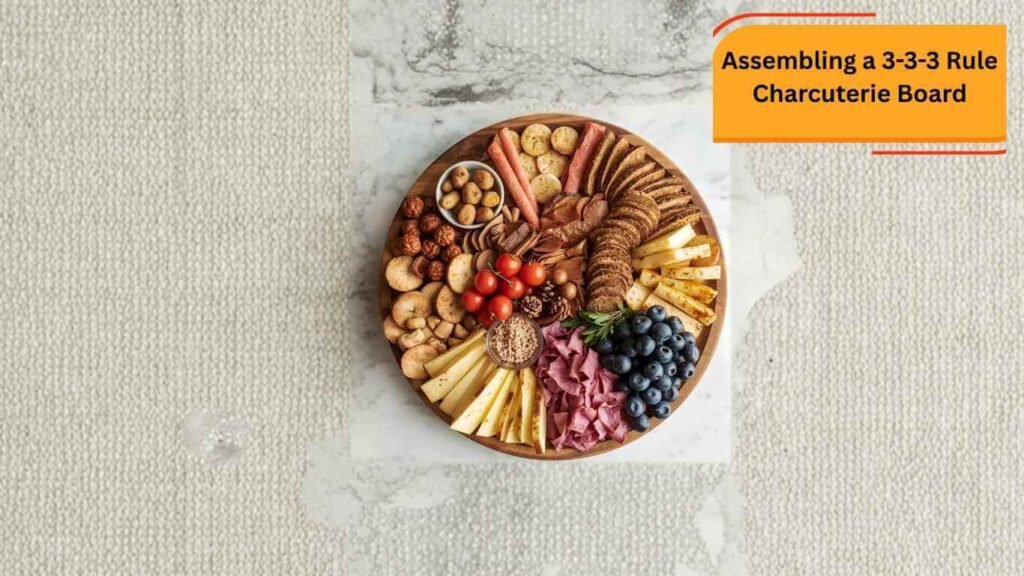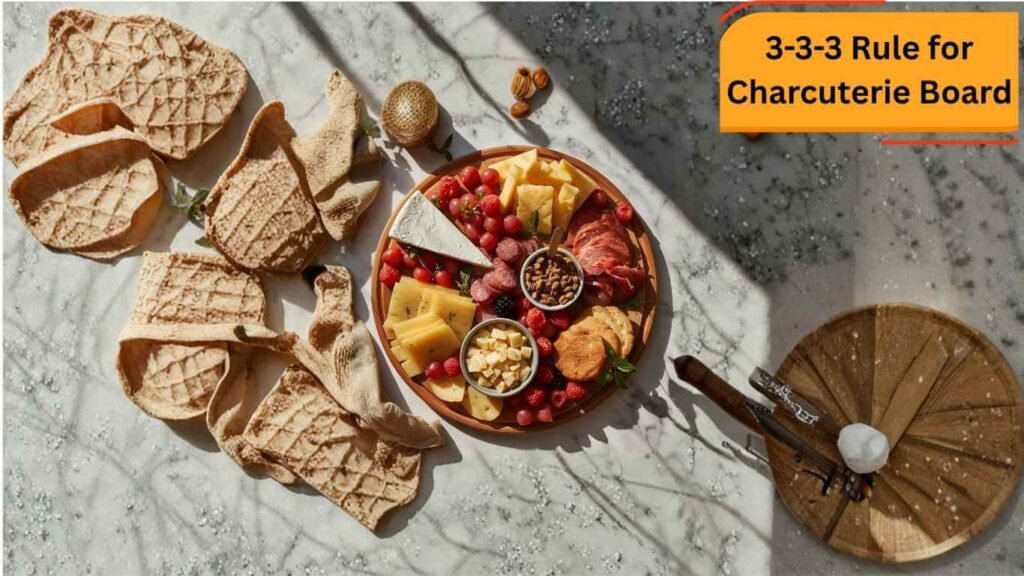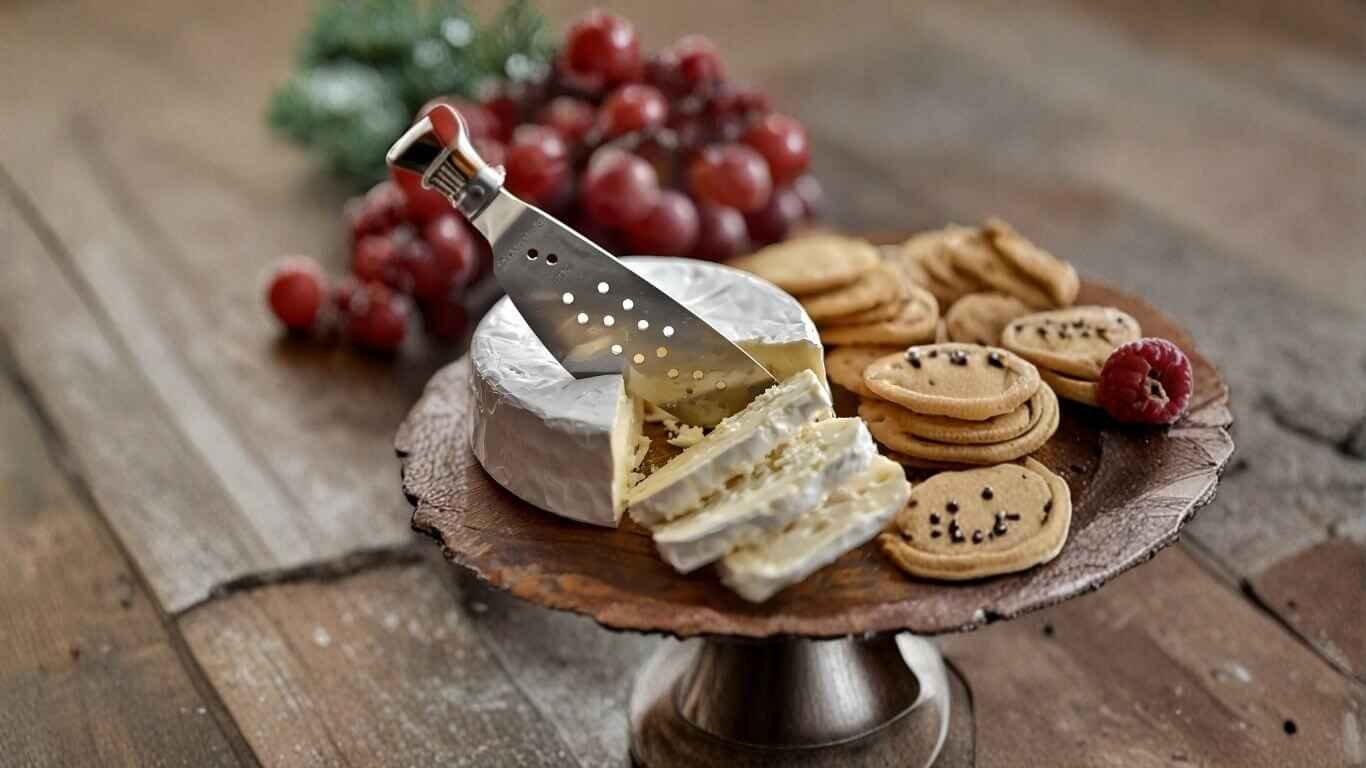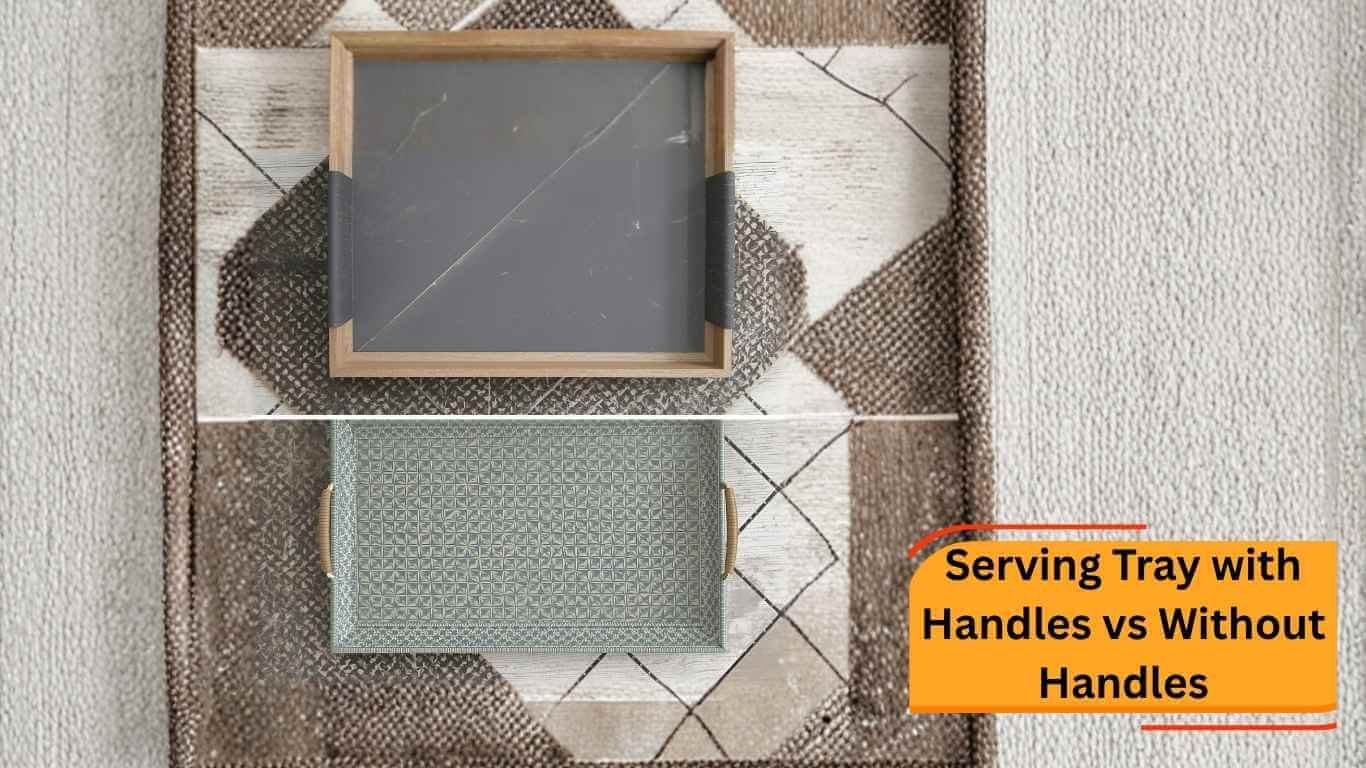A charcuterie board is a stunning, communal, and delicious way to entertain at social gatherings, holiday parties, and cozy nights in. A well-made board is an artful arrangement of cured meats, specialty cheeses, and vibrant accompaniments.
However, building one from scratch can seem overwhelming to many aspiring hosts. Which one do you prefer? When is enough enough? It looks so effortlessly abundant, how do you do it?
Enter the simple secret used by food stylists and savvy hosts everywhere: the 3-3-3 rule for charcuterie boards. This easy-to-remember formula removes all the guesswork, ensuring you create a perfectly balanced, beautiful, and crowd-pleasing platter every single time. This guide will break down the rule, help you choose the best ingredients, and show you exactly how to assemble a board that will wow your guests.
What Is the 3-3-3 (or 3-3-3-3) Rule?
At its core, the 3-3-3 rule charcuterie guideline is a simple framework for variety and balance. It’s a charcuterie board formula designed to give you a diverse selection of flavors, textures, and colors without overwhelming your shopping list or your guests.
The Core Formula
The rule suggests building your board around a foundation of three distinct items from three main categories. Many people also add a fourth category for starches, expanding it to a 3-3-3-3 rule.
- Three Types of Meats: This is the “charcuterie” heart of the board. The goal is to offer a variety of textures and flavors, such as something thinly sliced, something firm you can slice yourself, and something spicy or smoky.
- Three Types of Cheeses: Aim for a range of textures and flavor intensities. The classic trio includes a soft cheese, a hard or semi-hard cheese, and a bold, pungent cheese like a blue.
- Three Types of Accompaniments: These are the supporting players that cut through the richness of the meats and cheeses. This category covers the sweet (like fruit and jam), the briny (like olives and pickles), and the crunchy (like nuts).
- (Optional) Three Types of Starches: This fourth category provides the vehicles for enjoying everything else. It includes items like different types of crackers, fresh bread, and breadsticks.
The magic of using multiples of three is that it provides enough variety to be interesting but not so much that the flavors become muddled or the board looks chaotic. It’s the perfect guideline for charcuterie shopping tips, making your trip to the grocery store focused and efficient.
Choosing Each Element for Your Board
Here’s how to apply the charcuterie board building rules to select specific ingredients for a perfectly balanced platter.
Meats
Aim for a mix of textures and flavor profiles—think salty, spicy, and savory.
- Thinly Sliced Cured Meat: This adds an elegant, delicate texture.
- Classic Choices: Prosciutto (salty, buttery), Coppa (marbled, tender), Bresaola (lean, air-dried beef).
- Firm Slicing Sausage: This provides a heartier, chewier element.
- Classic Choices: Hard Salami (peppery, savory), Chorizo (smoky, spicy paprika flavor), Soppressata (rustic, often with garlic and spices).
- Something Different: Add a pâté, a spreadable meat, or a milder option.
- Classic Choices: Pâté de Campagne, mild smoked turkey, or a spicy ‘Nduja (spreadable pork sausage).
Cheeses
The key here is variety in both texture (creamy vs. crumbly) and flavor (mild vs. sharp).
- Soft Cheese: Creamy, spreadable, and often mild.
- Classic Choices: Brie (buttery, earthy), Camembert (more intense than Brie), fresh Goat Cheese (chèvre, tangy), Boursin (herbed and garlicky).
- Hard or Semi-Hard Cheese: Provides a firm texture and nutty or sharp flavors.
- Classic Choices: Aged Cheddar (sharp, crumbly), Manchego (nutty, firm), Gruyère (sweet, salty), Gouda (can be creamy or aged and crystallized).
- Blue or Bold Cheese: Adds a pungent, salty, and exciting flavor.
- Classic Choices: Gorgonzola (milder blue), Stilton (strong, earthy), Roquefort (sharp, tangy sheep’s milk blue).
Accompaniments
These elements provide contrast and cleanse the palate between rich bites.
- Sweet: Balances the saltiness of the meats and cheeses.
- Classic Choices: Fresh fruit (grapes, figs, pear slices), dried fruit (apricots, dates), honey or honeycomb, jams (fig jam is a classic).
- Briny & Tangy: Cuts through the richness with acidity.
- Classic Choices: A variety of olives (like Kalamata or Castelvetrano), cornichons (tiny, tart pickles), pickled onions.
- Crunchy: Adds essential texture.
- Classic Choices: Marcona almonds, pistachios, candied pecans, walnuts.
Starches (if using the 3-3-3-3 version)
Offer a variety of shapes, sizes, and textures for scooping, spreading, and stacking.
- Crackers: Include a simple, buttery cracker, a hearty whole-grain option, and perhaps a fruit and nut crisp for a touch of sweetness.
- Breads: Thinly sliced baguette (crostini), especially if lightly toasted with olive oil, is always a winner.
- Crisps: Tall breadsticks or cheese straws add height and visual interest to the board.
Why the 3-3-3 Rule Works
This simple guideline is popular for a reason—it benefits both the host and the guests, guaranteeing a successful and impressive spread.
Benefits for Hosts and Guests
- Ensures Balance: The rule is the cornerstone of balanced charcuterie ideas. It forces you to select a variety of items, naturally creating a board where every bite can be a new combination of salty, sweet, tangy, creamy, and crunchy.
- Simplifies Shopping: Instead of wandering the grocery store aimlessly, you have a clear, manageable list. “I need three cheeses, three meats…” This prevents overspending and decision fatigue.
- Creates Visual Appeal: Variety is inherently beautiful. A board with different colors (like green olives, red meats, and dark grapes) and textures (creamy cheese next to crunchy nuts) is automatically more visually stunning and appetizing.
- Avoids Overwhelm: For guests, a board with 30 different items can be intimidating. A curated selection of nine to twelve high-quality items feels more special and allows them to appreciate the individual flavors.
Step-by-Step: Assembling a 3-3-3 Rule Charcuterie Board
Knowing how to build a charcuterie board with 3 3 3 rule is easy once you have your ingredients.
Step 1: Select and Prep Ingredients
First, choose your items based on the formula. For example:
- Meats: Prosciutto, Hard Salami, Spicy Chorizo
- Cheeses: Brie, Aged White Cheddar, Gorgonzola
- Accompaniments: Grapes, Cornichons, Marcona Almonds
- Starches: Baguette Slices, Whole-Grain Crackers, Fig & Olive Crisps
Prep: About 30 minutes before serving, take cheeses out of the fridge to come to room temperature. Slice any firm meats, wash your fruits, and place jams or pickles in small bowls.
Step 2: Arrange the Board for Visual Appeal
- Place Anchors First: Start with your largest items. Place the bowls for jams or olives and the blocks/wheels of cheese on the board first. Space them out to create distinct zones.
- Add the Meats: Artfully arrange the meats. You can create a “river” of salami, fold prosciutto into rosettes, or elegantly drape coppa slices. Place them near the cheeses they pair well with.
- Fan Out the Starches: Arrange your crackers and bread slices in curving lines or fanned-out stacks, tucking them into the spaces between the meats and cheeses.
- Fill Every Gap: Use your smallest accompaniments to fill any remaining empty spaces. This is the secret to an abundant look. Pile nuts in small mounds, tuck grapes into corners, and scatter berries.
- Garnish: Finish with a sprig of fresh rosemary or sage for a touch of green and a wonderful aroma.
Step 3: Customize for Season or Dietary Needs
The 3-3-3 rule is incredibly adaptable.
- Dietary Needs: Swap in vegan cheeses, cured meat alternatives like smoked carrots, hummus, and an array of roasted vegetables. Use gluten-free crackers for the starches.
- Seasonal Flair: In the fall, add apple slices, pumpkin seeds, and a dollop of apple butter. For the holidays, use cranberries, candied nuts, and a sprig of holly (non-edible garnish).

Pro Tips and Creative Variations
Once you’ve mastered the basic rule, feel free to get creative.
- Use a Theme: Create an all-Italian board, a Spanish tapas board, or even a dessert board with 3 chocolates, 3 fruits, and 3 sweet dips.
- Go Local: Visit a local farmer’s market or fromagerie to find unique artisan meats, cheeses, and honey.
- Portioning: For an appetizer, plan on 2-3 ounces of meat and 2-3 ounces of cheese per person. If it’s the main meal, double that.
- Drink Pairings: A crisp Sauvignon Blanc, a light Pinot Noir, or a floral craft beer will complement the variety of flavors on your board without overpowering them.
Frequently Asked Questions (FAQ)
Is the 3-3-3 rule strict or just a guideline? It’s absolutely a guideline! Think of it as a starting point for charcuterie board for beginners. If you love cheese, do a 2-4-2 board (2 meats, 4 cheeses, 2 accompaniments). The goal is balance, and the rule is just the easiest way to achieve it.
What if I don’t eat meat/dairy? Adapt the rule to your needs! A vegetarian board could be 3 cheeses, 3 fruits/veggies, 3 dips, and 3 starches. A vegan board can feature 3 plant-based cheeses, 3 vegetable-based items (like roasted peppers or artichoke hearts), and 3 dips (like hummus or olive tapenade).
How can I make a board ahead of time? You can do all the prep work hours in advance. Slice your meats and cheeses, wash your fruits, and portion your nuts. Store everything in separate airtight containers in the fridge. Assemble the board just before your guests arrive, adding the crackers at the very end to keep them crisp.
Best board types for arranging charcuterie? Large wooden boards are classic and beautiful. Slate is dramatic and allows you to write the names of cheeses in chalk. Marble is great for keeping cheese cool. Ultimately, any large, food-safe platter or cutting board will work.
How do I keep food fresh on the board? Food safety guidelines recommend that perishable items like meat and cheese should not sit at room temperature for more than two hours. For longer gatherings, you can prepare a smaller board and replenish it with fresh items from the fridge as needed.
Conclusion
The what is the 3 3 3 rule for charcuterie board question has a simple answer: it’s your roadmap to a perfect platter. This foolproof formula empowers you to move beyond random selections and create a thoughtful, balanced, and visually stunning board with confidence. It simplifies your shopping, streamlines your prep, and guarantees a delicious experience for your guests.
Think of the rule as your creative foundation. Start with it, master it, and then feel free to break it. Add your personal flair, experiment with new pairings, and have fun with it. Now, go try the 3-3-3 rule at your next gathering your friends and family will thank you!



